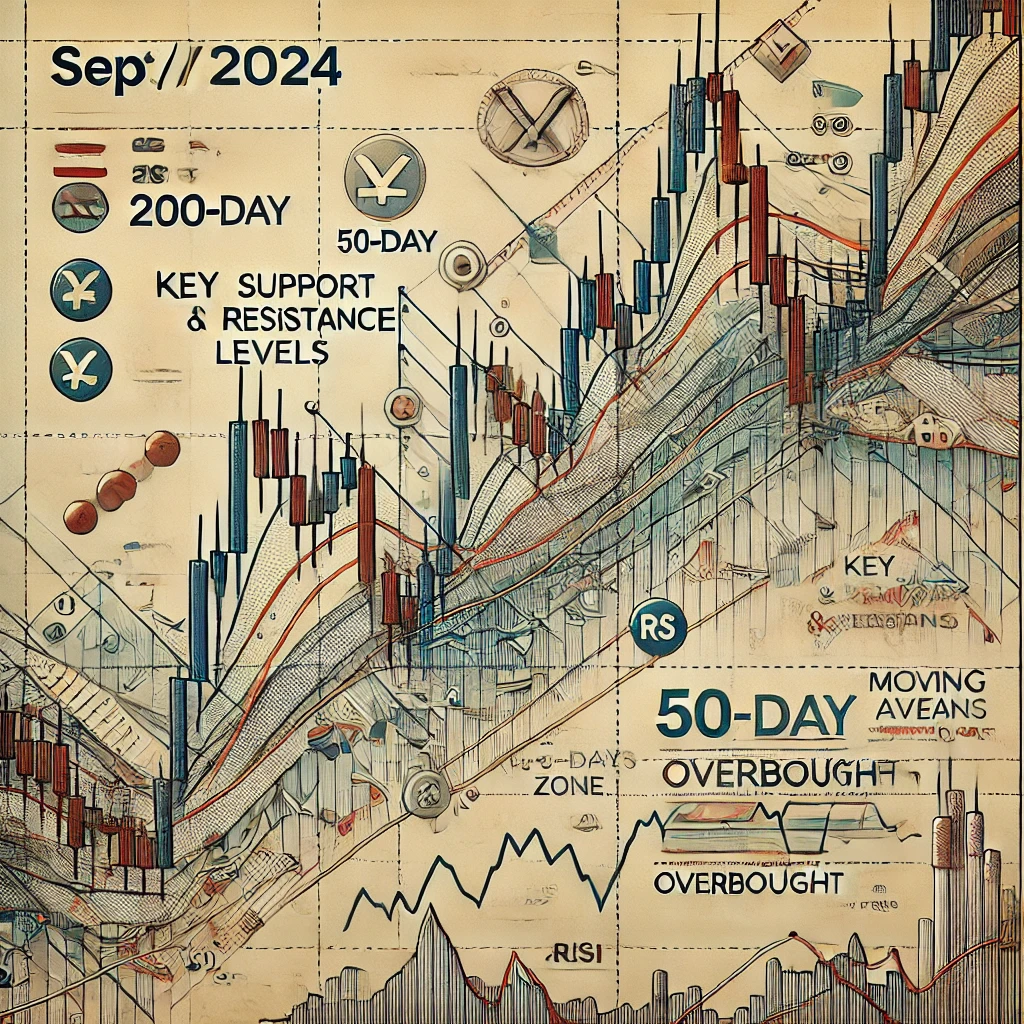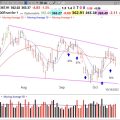Introduction
The EUR/USD currency pair, a popular trading instrument in the forex market, has recently shown some gains. However, the outlook for this currency pair might not be as optimistic as the recent upward trend suggests. In this article, we’ll dive deep into the factors affecting the EUR/USD movement, examining the economic data, geopolitical events, and key financial policies shaping the future of this important forex pair.
Recent Performance Of EUR/USD
In the latter part of September 2024, the EUR/USD showed some significant upward momentum, much to the satisfaction of traders and investors who had been waiting for a rebound. The currency pair experienced a rally, climbing up from the lows it experienced earlier in the year, signaling a short-term recovery. The recent gains have been attributed to multiple factors, including the Eurozone’s improving inflation data and the weakening of the US dollar.
The European Central Bank (ECB) recently indicated a potential pause in its aggressive monetary tightening, leading to market optimism regarding the European economy. Simultaneously, weaker-than-expected US economic data, including job growth slowing and inflation cooling, caused the dollar to lose some of its strength. This combination of factors helped push the EUR/USD higher.
Yet, as much as these recent movements have encouraged some optimism, several indicators point to caution for the long-term outlook of the currency pair.
Economic Factors Impacting EUR/USD
Eurozone’s Inflation Dilemma: Despite the ECB’s efforts to control inflation, the Eurozone economy is still grappling with significant inflationary pressures. Although inflation has eased somewhat in the last quarter, it remains far above the ECB’s target of 2%. Persistent inflation risks could force the ECB to continue its policy of higher interest rates, which would have both positive and negative effects on the euro.
Higher interest rates could, in theory, support the euro by making euro-denominated assets more attractive to investors. However, they could also stifle economic growth within the Eurozone, particularly in heavily indebted countries such as Italy and Spain, where higher borrowing costs could lead to financial stress.
US Economic Weakness: On the other side of the Atlantic, the US dollar has been showing signs of weakness in the wake of recent economic data. The Federal Reserve’s aggressive rate hikes, which were intended to combat inflation, have now begun to show their impact, with a slowdown in economic growth becoming more apparent.
Uncertainty around the Federal Reserve’s next move has left traders cautious. While inflation in the US has cooled, the Fed has yet to signal a decisive end to its tightening cycle. A prolonged period of high-interest rates could drag the US economy into a recession, which would weaken the dollar further and provide additional support for the EUR/USD in the short term.
Geopolitical Concerns Weighing On The Euro
Geopolitical tensions remain a significant factor affecting the EUR/USD. The ongoing war in Ukraine continues to place economic strain on Europe, particularly in terms of energy supplies. While Europe has managed to diversify away from Russian energy in recent years, the region is still vulnerable to price shocks and supply disruptions, which could impact its economic stability.
Further, the political landscape in Europe remains somewhat fragile. The rise of populist movements in key countries such as Italy, Hungary, and Poland has the potential to destabilize the European Union’s economic cohesion, which would have negative ramifications for the euro.
Key Technical Indicators For EUR/USD
From a technical perspective, the EUR/USD has recently broken through some key resistance levels, encouraging bullish traders. However, many analysts are cautious about whether the pair can maintain this momentum.
Support and Resistance Levels: The current support level for the EUR/USD sits at around 1.06, while resistance levels are being tested near 1.10. If the pair can break through the 1.10 mark, it may pave the way for further gains. However, failure to maintain this level could see the pair drop back to the 1.06 support area.
Moving Averages: The 50-day moving average for the EUR/USD remains below the 200-day moving average, indicating a longer-term bearish trend. While the recent rally has narrowed this gap, it would take a sustained upward movement to signal a shift to a more bullish long-term outlook.
Relative Strength Index (RSI): The RSI for the EUR/USD has been hovering near the overbought zone, suggesting that a short-term correction could be on the horizon. This is a key indicator to watch, as it may provide early signals of a reversal in the current trend.
Possible Scenarios For EUR/USD Moving Forward
Continued Strength in Euro: Should the Eurozone’s economic data continue to improve, with inflation under control and the ECB maintaining its current stance, the euro could continue to strengthen against the dollar. In this scenario, we would expect to see the EUR/USD breakthrough key resistance levels and head towards 1.12 or higher.
US Dollar Recovery: If the Federal Reserve pauses its rate hikes and signals confidence in the US economy, the dollar could recover its recent losses. In this case, the EUR/USD would likely reverse its gains and could fall back to the 1.05 level or lower, particularly if Eurozone economic data disappoints.
Geopolitical Disruption: A major geopolitical event, such as an escalation in the conflict in Ukraine or a significant energy supply disruption in Europe, could weigh heavily on the euro, causing the EUR/USD to drop significantly. Under such circumstances, we could see the pair testing the 1.00 parity level once again.
Conclusion
While the recent gains in the EUR/USD have provided some short-term relief for traders, the long-term outlook remains uncertain. Economic factors such as inflation in the Eurozone, the slowing US economy, and ongoing geopolitical tensions all suggest that caution is warranted. Traders should keep a close eye on upcoming economic data releases and central bank decisions, as these will play a pivotal role in shaping the future direction of the EUR/USD.
For now, it’s clear that while the EUR/USD has enjoyed a short-term boost, the outlook may not be as bright as some would hope. As always in forex trading, maintaining a flexible strategy and staying informed about global developments will be key to navigating the volatility ahead.



